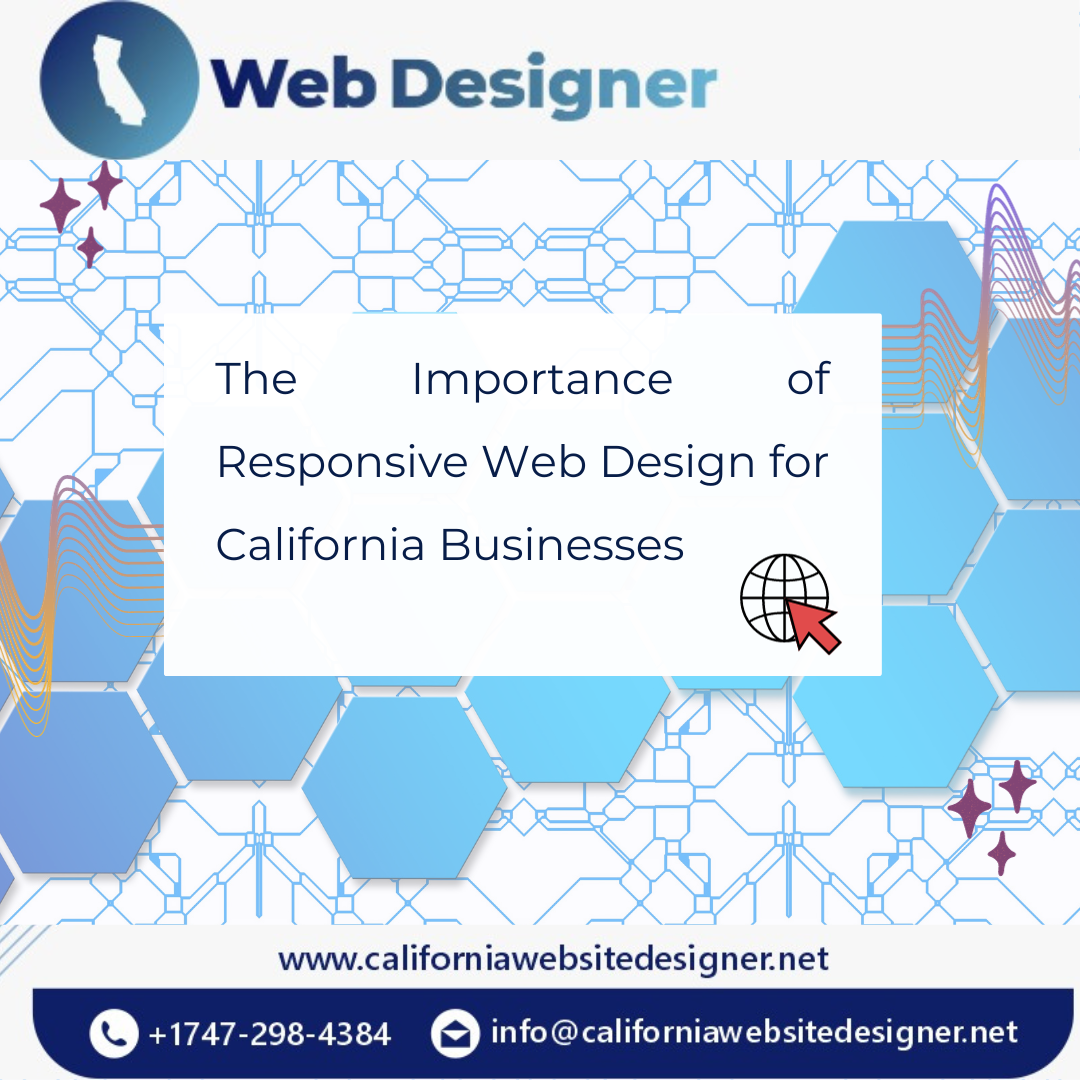In the ever-evolving digital panorama, website design is an essential element that may make or wreck your online presence. A nicely designed website can captivate visitors, force conversions, and enhance your search engine ratings. On the flip aspect, layout mistakes can lead to high jump quotes and lost opportunities. In this article, we will delve into the 5 common mistakes to avoid in website design, ensuring your website online not only impresses visitors but also climbs the ranks on Google.
1. Neglecting Mobile Responsiveness
In an age wherein cell gadgets dominate net utilization, neglecting cellular responsiveness is one of the most common mistakes in website design. Let’s damage it down with an easy instance: Imagine you are looking to study a book, but the textual content is so tiny that you want a magnifying glass. Frustrating, proper? That’s how site visitors experience once they get admission to a non-responsive website on their smartphones or drugs.
Google knows this, and they prioritize mobile-friendly websites because they want users to have a smooth experience. If your website doesn’t adapt seamlessly to various screen sizes, Google might penalize it by pushing it down in search results. To avoid this, think of your website as a chameleon that changes its appearance depending on the device it’s viewed on.
Consider implementing a responsive framework like Bootstrap. It’s like having a magical tool that automatically adjusts your website’s layout, fonts, and images to fit any screen. This ensures a user-friendly experience, no matter if someone is visiting from their massive desktop computer or their tiny smartphone. So, remember, mobile responsiveness isn’t a fancy feature; it’s a must to avoid common mistakes in website design and climb the ladder in Google’s rankings.

2. Slow Loading Times:
Website velocity isn’t always only critical for a clean person experience but is also a crucial aspect in search engine optimization. Google locations a high fee on fast-loading websites and rewards them with higher search ratings. Let’s explore a few not-unusual mistakes in website design that may lead to gradual loading instances and a way to rectify them.
Common Mistakes to Avoid in Website Design
Common Mistake 1: UN Optimized Images
One of the most common errors is the usage of big, UN-optimized images for your internet site. These photos can considerably sluggish down your site’s loading speed. To keep away from this, make sure to compress photos before importing them. Tools like Adobe Photoshop or online structures like Tiny PNG allow you to reduce picture file sizes without compromising fine. Additionally, consider the use of responsive images that regulate the consumer’s screen size, saving bandwidth and improving loading times.
Common Mistake 2: Neglecting Browser Caching
Browser caching is a way that allows a person’s browser to store certain elements of your website, including photographs, stylesheets, and scripts, so they don’t want to be reloaded on the next visit. Neglecting browser caching is a common oversight that could slow down your internet site. To rectify this error, configure your net server to enable browser caching, specifying how long browsers have to store cached content. This reduces the need for redundant facts downloads and consequences in faster-loading instances for returning traffic.
Common Mistake 3: Not Using Content Delivery Networks (CDNs)
Many website owners overlook the benefits of Content Delivery Networks (CDNs) in improving loading times. A CDN consists of a network of servers located in various geographic regions. When a user accesses your website, the CDN serves content from the nearest server, reducing the physical distance data needs to travel. This not only accelerates loading times but also enhances user experience. Popular CDNs include Cloud Flare, Amazon Cloud Front, and Akamai. Integrating a CDN with your website is a straightforward process that can significantly boost performance.
These are common mistakes to avoid in website design that can hinder loading speed, impacting both user experience and SEO. By optimizing snapshots, permitting browser caching, and enforcing a Content Delivery Network, you could deal with those troubles correctly, resulting in a quicker, more search engine marketing-friendly internet site that ranks better on Google. Remember, even small enhancements in loading instances could make a large difference in maintaining traffic and improving your site’s seek engine visibility.

3. Poor Navigation Structure: The Impact of Confusing Menus
One of the most not unusual mistakes in website design is a navigation shape that confuses customers, leading to frustration and hampering your site’s search engine overall performance. To put it clearly, your internet site’s menu must act as a roadmap for traffic, guiding them via your content seamlessly. Let’s ruin this down with more detail:
Common Mistake 1: Lack of Logical Categories
Imagine a bookstore in which books are randomly scattered with no clear classes. Navigating such a shop could be a nightmare. Similarly, when your internet site lacks logical classes, users can’t find what they are seeking out. For example, an e-trade website should categorize products logically, like “Electronics,” “Clothing,” and “Accessories.” This helps customers quickly discover what hobbies they have.
Common Mistake 2: Complex Menus without Drop-Downs
If your website’s menu resembles an intricate puzzle, you’re making another design blunder. Users prefer simplicity and ease of use. Instead of overloading your main menu with numerous options, consider using drop-down menus. For instance, an educational website could have a simple main menu, and when users hover over “Courses,” it can expand to show different subjects, making it user-friendly and less overwhelming.
Common Mistake 3: Neglecting the Sitemap
A sitemap is like a treasure map for search engines and users. Neglecting this vital component is another common mistake. A well-structured sitemap not only helps search engines crawl your site effectively but also allows users to see the entire content layout at a glance. For instance, a blog website can have a sitemap that lists different categories and the latest posts under each.
By addressing those not-unusual mistakes in website design, including growing logical categories, imposing drop-down menus, and utilizing a nicely established sitemap, you’ll enhance user experience, lessen frustration, and improve your website online’s search engine overall performance. Remember, a nicely prepared navigation shape not simplest makes your internet site consumer-friendly but also enables search engines like Google to understand and index your content material successfully.
4. Ignoring SEO Best Practices:
Ignoring SEO Best Practices is one of the most not unusual mistakes in website design. To help you understand why it’s essential to avoid this blunder, let’s damage down the key components of search engine optimization in simpler terms.
Optimizing Title Tags: When we talk about name tags, consider them as the headlines of your website pages.
These tags should accurately describe what each page is about. For instance, if your website sells handmade jewelry, your title tag for a product page should be something like “Exquisite Handmade Necklaces.” This not only informs visitors but also tells search engines what your page is offering.
Meta Descriptions: Think of Meta descriptions as the short summaries or blurbs that appear in search results. These descriptions should be concise yet informative. For our jewelry website, a Meta description could be, “Discover one-of-a-kind, artisan-crafted necklaces. Explore our stunning collection of handmade jewelry.” This not only entices users to click but also gives search engines more context.
Image Alt Text: Alt text is like a caption for images on your site. It’s essential because search engines can’t “see” images like humans do. So, when you have a picture of a beautiful necklace, your alt text should describe it, such as “Handcrafted silver pendant necklace with intricate details.” This helps search engines understand the image’s content and can improve your site’s ranking in image searches.
Schema Markup: Schema markup is like a secret language that you use to explain your content to search engines. Imagine you’re running a recipe website. By using schema markup, you can tell search engines that the content on a page is a recipe, and then you can specify details like ingredients, cooking time, and nutritional information. This structured data helps search engines display your content more prominently in search results, including rich snippets and knowledge panels.
Incorporating those search engine optimization first-rate practices into your website design is like giving search engines like Google and Yahoo a roadmap to navigate and understand your content material higher. It complements your website online’s visibility, click-thru fees, and in the long run, your scores on Google. So, remember to optimize your name tags, craft compelling meta descriptions, describe your photographs, and use schema markup to assist search engines like Google help you.
5. Overlooking Content Quality: The Heart of Your Website
When it involves website design, it is important to understand that your content material is the lifeblood of your online presence. Neglecting content first-rate is one of the maximum common mistakes in website design. You may have a visually attractive site, but if your content material falls brief, it might not resonate with your target audience.
High-nice content isn’t always approximately using complex jargon or industry-specific terms. It’s approximately creating content material that speaks to your target market in a way they could recognize and respect. For instance, in case you run an online clothing sale, your product descriptions have to be clear, concise, and persuasive. A properly crafted product description should no longer describe the item but additionally evoke a choice to personalize it.
Examples of Engaging Content
Let’s break down what high-quality content means with some easy-to-understand examples:
1. Blog Posts: Suppose you’re a travel company. An attractive weblog submission can be approximately “The Top 10 Must-Visit Beach Destinations.” It has to offer insightful statistics approximately those destinations, such as the satisfactory time to visit, what to do there, and perhaps a few private anecdotes.
2. Product Descriptions: If you are selling electronics, an informative product description for a telephone needs to highlight its key capabilities, which include digital quality, battery life, and processing pace, in a way that is easy for ability shoppers to apprehend.
3. Multimedia Elements: For a cooking website, consisting of engaging multimedia elements ought to suggest adding step-through-step video courses in your recipes, making it simpler for your audience to comply with alongside and reflect the dish efficaciously.
By specializing in developing content that resonates with your target market and addresses their needs, you now not most effectively avoid the not unusual mistake of overlooking content material satisfactory however additionally function your website for higher seek engine ratings.
The Competitive Edge
The internet is flooded with websites competing for customers’ interest. To stand out and keep away from the pitfall of subpar content material, aim for originality. Creating precise, original content is no longer the most effective offer fee for your visitors however additionally units you aside from the competition.
Let’s recollect an example: if you have an e-trade website selling homemade rings, supplying a blog submission about the art of jewelry making with insights into your precise crafting process can interact with your target audience and differentiate you from other jewelry outlets. Original content builds acceptance as true and establishes you as an expert in your area of interest.
The content material is paramount in website design. Engage your audience with clean-to-understand, informative, and unique content material, and you will no longer keep away from not unusual mistakes in website design however additionally stable an aggressive area that could propel your website to the top of seek engine consequences.

Conclusion
In the competitive international of online business, the expertise of a California website designer agency can be your greatest asset or your biggest liability. By fending off the 5 commonplace errors stated above, you can create a website that no longer most effectively captivates your target audience but also climbs the ranks on Google. Remember, a well-designed website isn’t simply visually attractive; it is optimized for SEO, person-friendliness, and cell responsiveness. So, take these steps to heart, and watch your internet site jump within the search engine ratings.
Frequently Asked Questions
Q1. What is the significance of mobile responsiveness in website design?
Mobile responsiveness is important in website design as it ensures that your internet site adapts to exclusive display sizes and devices, such as smartphones and pills. Neglecting cellular responsiveness can cause a poor consumer experience and lower search engine scores. Google prioritizes mobile-friendly websites, so having a responsive design is crucial to reaching a broader target audience and improving your search engine marketing.
Q2. How can slow loading times impact my website’s performance in search results?
Slow loading times may have a tremendously poor impact on your internet site’s search engine ranking. Google values rapid-loading websites because they provide a higher user level. If your site takes too long to load, traffic is more likely to dance, which can lower your scores. To keep away from this, optimize images, use browser caching, and take into account content transport networks (CDNs) to beautify your site’s velocity.
Q3. What are the key elements of a clear navigation structure in website design?
A clear navigation structure is important for steering customers through your internet site seamlessly. Key elements include a properly organized menu, logical categories, drop-down menus for subpages, and a structured sitemap. These factors make it easy for site visitors to locate the information they want and enhance their usual reveal on your web page.
Q4. Can you explain what SEO best practices are in website design?
SEO best practices in website design involve optimizing various on-page elements to improve your site’s search engine visibility. This includes optimizing title tags, Meta descriptions, and image alt text to make your content more discoverable by search engines. Additionally, implementing schema markup provides structured data that can enhance your site’s visibility and click-through rates in search results.
Q5. Why is content quality considered the “king” in website design?
The content fine is regularly referred to as the “king” in website design due to the fact it is a core component of successful SEO and user engagement. High-nice content no longer enables your internet site to rank higher in search consequences however additionally continues to traffic engaged and encourages them to discover similarly. Well-researched weblog posts, informative product descriptions, and attractive multimedia elements cater to your target audience’s wishes, making them much more likely to live on your website and convert into customers.








